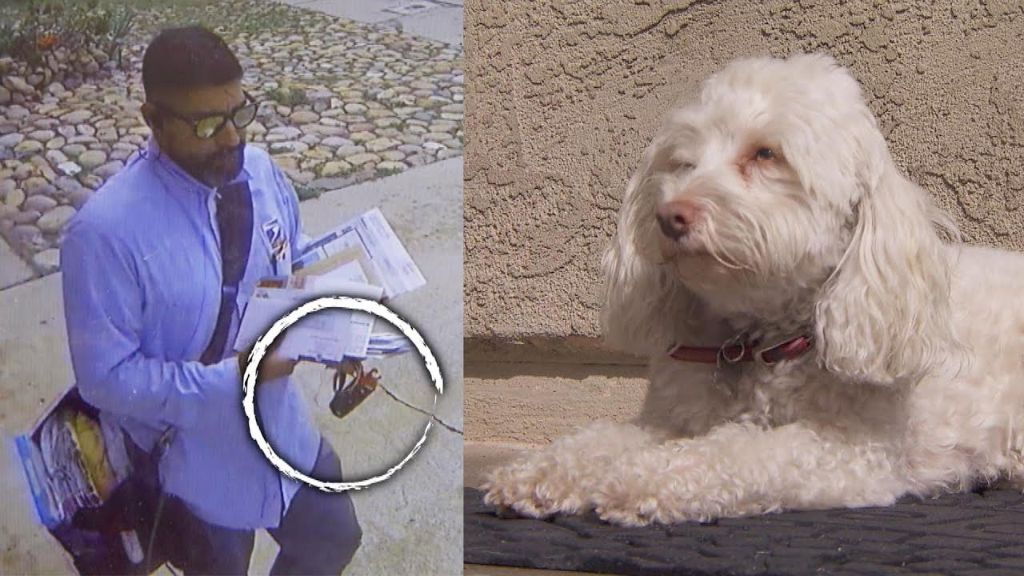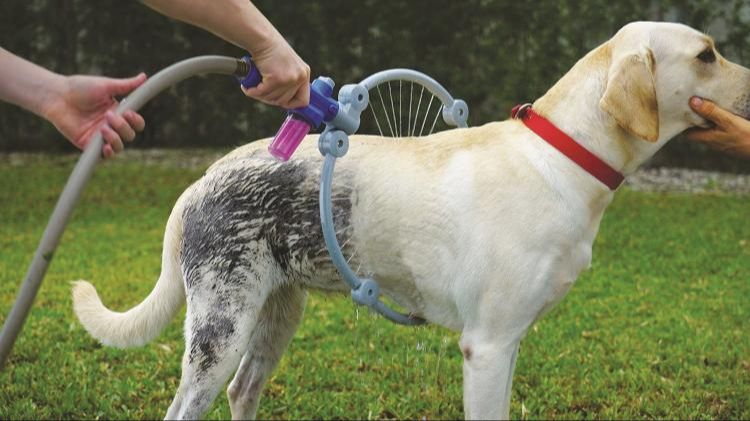Introduction
Aggressive dogs can be frightening, especially when you feel helpless to stop an attack. Pepper spray offers a non-lethal way to protect yourself and deter a dog, but is it legal or safe? This article looks at everything you need to know before deciding whether to use pepper spray on dogs.
What is Pepper Spray?
Pepper spray, also known as oleoresin capsicum spray or OC spray, is a lachrymatory agent that contains concentrated extracts from chili peppers (Wikipedia, 2022). The active ingredient in pepper spray is capsaicin, which is an irritant found in chili peppers that causes a burning sensation. When sprayed into the eyes, pepper spray inflames the mucous membranes and causes temporary blindness, pain, and tears (Merriam-Webster, 2022).
Pepper spray comes in canisters that allow the pepper solution to be sprayed in a stream or fog at an attacker. The effects of pepper spray are temporary but can incapacitate a person by irritating the eyes, nose, throat and skin (Cambridge Dictionary, 2022). The irritation causes coughing, gagging and shortness of breath. The effects typically last around 30-60 minutes, giving the victim time to get to safety.
Is It Legal to Use Pepper Spray on Dogs?
The legality of using pepper spray on dogs depends on the jurisdiction. In general, pepper spray is legal for use against aggressive animals in self-defense in most states across the U.S. However, there are some exceptions. According to the U.S. Animal Welfare Act, pepper spray should not be used to train, work, or handle animals. Additionally, indiscriminately spraying pepper spray at any animal could result in animal cruelty charges. It’s important to check your local laws before using pepper spray on a dog.

Some states, including California, prohibit the use of pepper spray against non-aggressive animals (https://www.quora.com/What-if-any-are-my-options-for-my-neighbor-pepper-spraying-my-dogs-while-they-were-in-our-fenced-backyard). In Texas, it is legal to use pepper spray against aggressive dogs, but not simply as a training method (https://www.sabrered.com/blog/pepper-spray-and-dogs-4-things-you-need-know). Laws vary in other states, so check regulations where you live. When used properly in self-defense, pepper spray can legally deter an aggressive, approaching dog. But indiscriminate or malicious use could result in criminal charges.
When Would You Use Pepper Spray on a Dog?
There are limited situations where using pepper spray on a dog may be necessary for self-defense or protection. These include:
Defending yourself from an aggressive, attacking dog. If a strange or unleashed dog approaches in a threatening manner, shows teeth, growls, or snarls, pepper spray can be used as a deterrent. It is advisable to try backing away slowly first before resorting to pepper spray. (Pepper Spray and Dogs: 4 Things You Need to Know)
Breaking up two dogs fighting. If you encounter two dogs engaged in a violent altercation, a quick burst of pepper spray may startle them enough to stop the fight. Exercise caution, as the dogs may redirect their aggression. (I had to pepper spray a couple of dogs. Here’s how that went)
Stopping a dog that is attacking another animal or person. In an emergency where a dog is mauling another animal or person, using pepper spray to stop the attack may be justified. This should be a last resort if the dog cannot be deterred by loud noises or other means. (Pepper Spray and Dogs: 4 Things You Need to Know)
Risks and Dangers
Using pepper spray on dogs carries some risks and dangers that need to be considered. Here are some of the main issues to keep in mind:
Effects on Dogs: Pepper spray can be very irritating and painful for dogs. According to VetInfo, it irritates the eyes, skin, and mucous membranes. The effects can last for hours, causing the dog discomfort. While not usually fatal, pepper spray should be avoided if possible.
Legal Repercussions: In many places, it is illegal to use pepper spray on a dog, especially your own pet. According to Pepper Spray Store, you could face charges of animal cruelty. It’s best to check local laws before considering using pepper spray.
Other Legal Issues: If you spray a neighbors dog, even if it’s on your property, you could face legal issues. The dog’s owner could sue for damages or file a complaint. It’s best to find alternatives unless the dog poses an imminent threat.
Accidental Contact: Using pepper spray has risks, including accidentally spraying yourself or bystanders, especially in windy conditions. This could lead to injury and legal problems. Proper training on use is essential.
In summary, pepper spraying a dog has risks. It should be a last resort if the dog is threatening immediate harm. Check laws, use careful judgment, consider alternatives first, and use proper precautions if deployed.
Proper Use of Pepper Spray
When using pepper spray on a dog, it’s important to deploy it effectively and safely. Here are some tips for proper use:
Aim the spray at the dog’s face and eyes. The mucous membranes around the eyes and nose are extremely sensitive to the capsicum in pepper spray. Spraying this area will cause the most discomfort and deter the dog.[1]

Get within range, around 8-20 feet. The spray needs to hit the dog’s face to be effective so you need to be close enough for it to reach. At the same time, keep a safe distance so the dog can’t easily attack you.[2]
Use a spraying pattern not a stream. A fog or cone spraying pattern will cover more area and make it harder for the dog to avoid. It also reduces the risk of eye injury compared to a pepper spray stream.[1]
Press down on the trigger for at least 3-5 seconds. This ensures enough spray comes out to fully hit the dog’s face and eyes. Re-apply if needed but avoid excessive spraying.[2]
Be prepared for the spray to take effect. It may take several seconds for the dog to disengage an attack as the spray sets in. So keep spraying even if there’s no initial reaction.[2]
Consider your surroundings. Avoid spraying upwind where pepper spray could blow back on you or innocent bystanders. Only use it in open outdoor areas with good ventilation.[1]
[1] https://www.sabrered.com/blog/pepper-spray-and-dogs-4-things-you-need-know
[2] https://www.thehomesecuritysuperstore.com/blogs/the-home-security-superstore-blog/how-to-pepper-spray-human-vs-dog-vs-bear
First Aid for Dogs Sprayed with Pepper Spray
If your dog has accidentally been sprayed with pepper spray, it’s important to act quickly to help relieve their pain and irritation. The pepper spray will cause significant burning and inflammation of their eyes, nose, mouth and skin. Here are some tips for providing first aid to a dog sprayed with pepper spray:
First, try to stay calm yourself. Your dog will be in distress, so a soothing presence will help keep them still while you provide aid. Gently wipe off any residual pepper spray from their fur, but avoid getting it on your hands.
Next, use cool water to flush away the irritant. Use a garden hose or buckets of water to rinse their face, eyes, mouth and body. This will help dilute the pepper spray and soothe the burning sensation. Make sure to flush for at least 15 minutes and keep their eyes open during rinsing. You can even submerge your dog in a tub or pool if needed.
After thorough rinsing, dry your dog off and apply a small amount of olive oil, milk or liquid antacid to their nose and mouth. This can help neutralize any remaining pepper spray. Avoid using creams or ointments which may trap the irritant against their skin.
Be sure to call your veterinarian, as they may prescribe medication to reduce swelling, pain or inflammation. Symptoms may worsen or reoccur after the initial rinsing, so monitoring by a vet is recommended.
With prompt first aid treatment, most dogs recover fully from pepper spray exposure. Just be sure to take quick action to relieve discomfort and prevent any secondary injuries from their distress. Remaining calm but acting fast is key to helping a pepper sprayed pup.

Alternatives to Pepper Spray
While pepper spray can be an effective dog deterrent in some situations, there are other options that may be preferable in many cases. Some alternatives to consider include:
Citronella Spray – Citronella has a strong odor that dogs dislike, making citronella-based sprays an alternative to pepper spray. Citronella is derived from plants and is not as harsh on a dog’s senses as pepper spray. However, it may not stop an aggressive dog as effectively as pepper spray.https://www.k9ofmine.com/best-dog-repellent-sprays/
Air Horns – Air horns provide a very loud noise that can startle and deter an approaching off-leash dog. The noise is unpleasant for dogs but does not physically harm them.
Walking Sticks – Sturdy walking sticks can provide a physical barrier between you and an aggressive dog. They allow you to fend off a dog if needed without having to use pepper spray or other chemical deterrents. However, they require close proximity to an aggressive dog.
Umbrellas – Opening an umbrella quickly can startle and intimidate a dog that is approaching aggressively. This creates a barrier that may cause the dog to back down.
Alarms – Personal safety alarm devices that emit very high-pitched noises can deter dogs but are less harmful to their senses than pepper spray. However, they may be less effective against dogs that are highly aggressive.
Avoidance – Simply avoiding unknown loose dogs whenever possible can prevent encounters where self defense becomes necessary. Taking alternative routes and staying aware of loose dogs can often defuse situations before they start.
Using humane alternatives and preventative avoidance measures can reduce the need for using forceful self defense with dogs in many cases. However, pepper spray remains an option if other deterrents fail and a dog attack seems imminent.
Making a Report After Using Pepper Spray
If you use pepper spray on a dog, it’s important to follow proper protocols afterward. Here are some things you should do:
Call animal control or the police. Let them know you used pepper spray to defend yourself or others from an aggressive dog. Provide details about the incident and the owner if known. Animal control may want to follow up to evaluate the dog.
File a report. Many areas require you to file an official report after discharging pepper spray, especially if used against a person or pet. This creates a record of the incident.
Get contact information. If possible, get contact details for the dog’s owner as well as any witnesses to the incident. Having their accounts could help back up your report.
Document evidence. Take photos of any injuries to yourself, others, or the dog. Also photograph the scene including any blood or pepper spray residue. This visual evidence can support your account of what happened.
Provide medical assistance. If the dog requires veterinary care, try to get that facilitated through animal control. You may potentially be liable for injury to the dog depending on laws in your area.

Follow up as needed. Cooperate fully with any investigation into the incident. You may need to provide additional statements or details on the events.
While reporting pepper spray use may take time, following proper protocols can protect you legally in the aftermath of an incident.
Conclusion
In summary, using pepper spray on dogs can be legally justified in certain situations, such as preventing injury. However, it comes with definite risks such as unintended exposure to people or accidental overuse on the animal. Alternatives like tossing a blanket, using a citronella spray, or creating distance are safer first steps. If you ever feel the need to deploy pepper spray against a dog, first consider if it’s a necessary response or if other defensive actions could diffuse the encounter. Use good judgment, report the incident, and be prepared to provide first aid.
Ultimately, pepper spray should only be used on dogs in rare and urgent scenarios. While it can stop a dangerous animal, it does carry hazards. With proper precautions, risks can be mitigated. But whenever possible, the preference is to find more humane alternatives for both our own safety and the wellbeing of the animal.